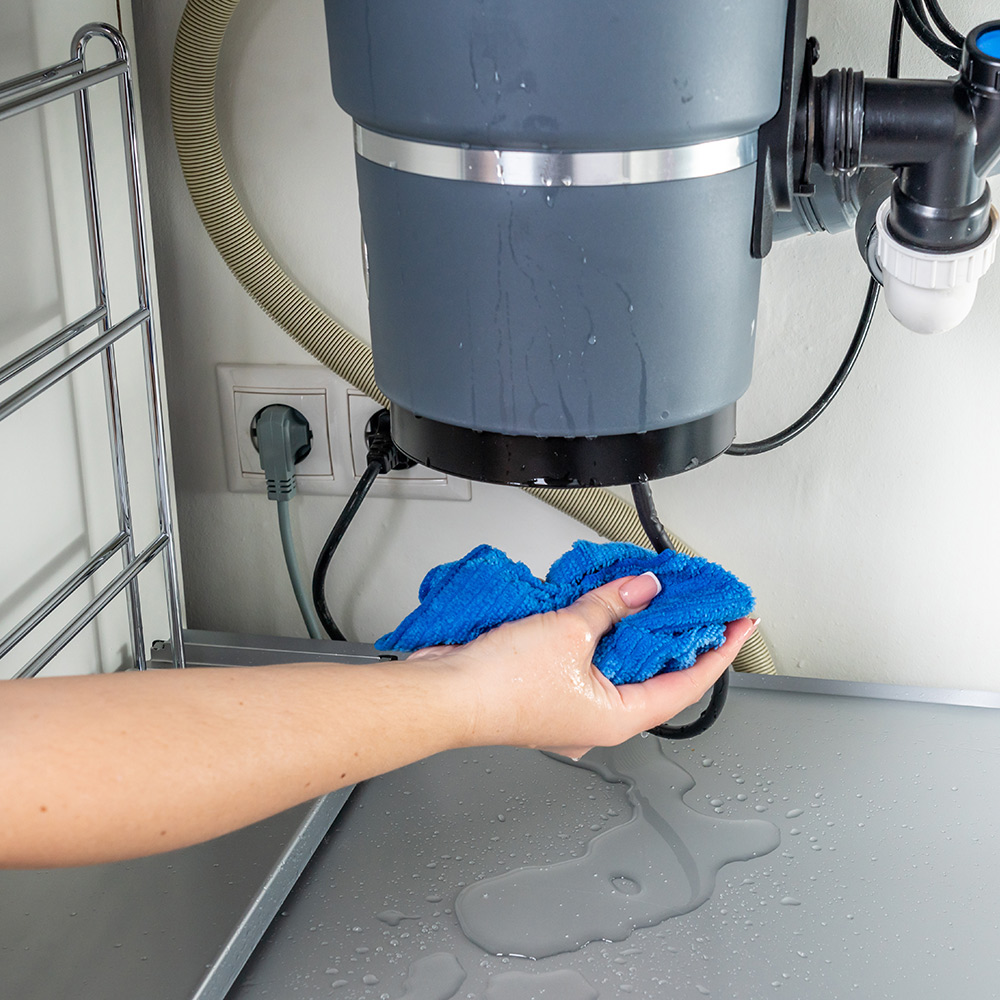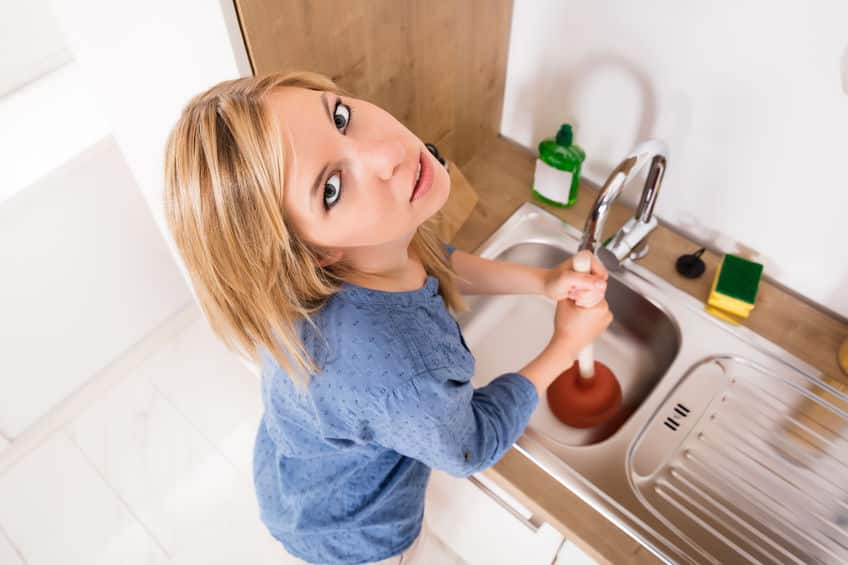Clear Techniques for Repairing a Leaky Garbage Disposal
Clear Techniques for Repairing a Leaky Garbage Disposal
Blog Article
Everybody is bound to have their personal theory when it comes to Why Is My Garbage Disposal Leaking From the Bottom?.

Garbage disposals are vital kitchen area appliances that aid in getting rid of food waste successfully. However, a dripping waste disposal unit can be an irritating and messy problem to manage. Luckily, several leaks can be dealt with quickly with a couple of basic actions. In this article, we will certainly discuss just how to repair a leaking waste disposal unit effectively.
Introduction
Garbage disposals are mounted under cooking area sinks and are created to shred food waste into smaller sized pieces, allowing it to travel through the plumbing system conveniently. While these gadgets are generally reliable, leaks can take place in time due to deterioration, loosened connections, or damages to the device.
Step-by-Step Guide to Taking Care Of a Dripping Garbage Disposal
Shut off the Power
Prior to attempting any type of repair services, guarantee that the power to the garbage disposal device is switched off to prevent the risk of electric shock.
Find the Leak
Determine the precise area of the leakage and figure out the reason
Tighten up Links
Use a wrench to tighten up any type of loosened links in between the disposal unit and the plumbing system.
Change Seals or Gaskets
If the leakage results from used seals or gaskets, remove the old parts and replace them with new ones.
Patching Fractures or Holes
For splits or holes in the disposal system, use epoxy or an ideal patching material to seal the broken area.
Recognizing the Resource of the Leak
Prior to trying to deal with a leaking garbage disposal, it is important to recognize the resource of the leakage. This can generally be done with visual assessment or by performing straightforward examinations.
Visual Examination
Evaluate the waste disposal unit device meticulously for any kind of indications of water leakage. Pay very close attention to areas around seals, gaskets, and link factors.
Checking for Leaks
One way to examine for leaks is by running water through the disposal device and checking for any kind of visible signs of leakage.
Usual Sources Of Leaks in Waste Disposals
Worn Seals and Gaskets
Seals and gaskets play an important duty in preventing water from leaking out of the garbage disposal. Gradually, these parts can deteriorate, resulting in leaks around the disposal system.
Loose Links
The links in between the waste disposal unit and the plumbing system can end up being loose gradually, triggering water to leakage out during operation.
Fractures or Holes in the Disposal Unit
Physical damage to the waste disposal unit, such as splits or openings in the real estate, can likewise lead to leaks.
Devices and Products Needed for Taking Care Of a Dripping Garbage Disposal
Prior to beginning the fixing procedure, gather the necessary devices and materials, including a screwdriver, adjustable wrench, plumbing professional's putty, replacement seals or gaskets, and epoxy or patching product for repairing cracks or openings.
Evaluating the Garbage Disposal After Repair Work
When the fixing is full, evaluate the garbage disposal by running water via it to make sure that the leak has been resolved.
Preventive Upkeep Tips to Prevent Future Leakages
To prevent future leaks, it is essential to carry out normal maintenance on your waste disposal unit. This includes keeping it clean, staying clear of placing non-food products or tough objects down the disposal, and regularly looking for leakages or various other concerns.
Final thought
Finally, fixing a leaking garbage disposal is a relatively straightforward procedure that can be finished with standard devices and products. By complying with the steps laid out in this article and exercising preventative upkeep, you can keep your garbage disposal in good working condition and prevent costly repairs in the future.
What to Do About a Leaking Garbage Disposal
A leaking garbage disposal often goes unnoticed until you confront a sopping cabinet, a foul-smelling puddle, or an audible drip-drip-drip from the unit. The fix can be frustrating, too, because the leak can stem from a number of components in the system. Fortunately, with a little sleuthing, you can zero in on the leak and—depending on the exact location—stop the icky oozing and repair the component that caused it. Worst case scenario, if it turns out that the garbage disposal must be replaced, installing a new one is a reasonable do-it-yourself task for those with basic plumbing skills. Read on to keep the cash you’d otherwise hand over to a pro.
Prepare to find the leak
Prior to testing the garbage disposal for leaks, unplug it at the wall outlet and turn off the power from the breaker box to prevent electrical shock. Then insert a watertight sink stopper into your sink drain and wipe the unit dry with a clean cloth. In any handy container, mix a few drops of food coloring into a few cups of water, and pour the dyed water onto the sink stopper to help you locate the leak.
Investigate the source
the top, where the disposal meets the sink drain the side, where the dishwasher hose or main drain pipe connects to the disposal or the bottom of the unit Inspect each of these locations while gliding a light-colored rag over the unit; the dyed water will readily show on the rag and reveal the location of the leak. If a leak isn’t immediately apparent, remove the sink stopper and pour a few more cups of dyed water down the sink drain, then check for leaks again. Leaks near the top of the unit are more likely to show themselves while the sink is plugged, while side and bottom leaks are more noticeable while the sink is unplugged.
The metal sink flange that sits directly inside the sink drain is typically sealed around the top with plumber’s putty (a clay-like sealant) and then secured from under the sink with bolts. If the plumber’s putty deteriorates, or the bolts loosen, the flange can no longer form a watertight seal between the sink drain and the disposal—which could cause a leak at the top of the unit.
To reseal the leaky flange, you must first detach the garbage disposal. Start by loosening the screws securing the main drain pipe to the disposal, then loosen the screws in the metal clamp securing the dishwasher hose to the disposal and detach the drain pipe and dishwasher hose from the disposal. Loosen the screws in the mounting ring that connects the disposal to the metal mounting assembly beneath the sink, then pull down the disposal and carefully set it on a clean, dry surface. Loosen the bolts in the mounting assembly with a wrench, then pull down the mounting assembly and set it near the disposal.

I recently found that blog post about Why Is when doing a search on the web. Don't hesitate to take the time to promote this blog entry if you enjoyed reading it. Many thanks for your time invested reading it.
Click Here Report this page